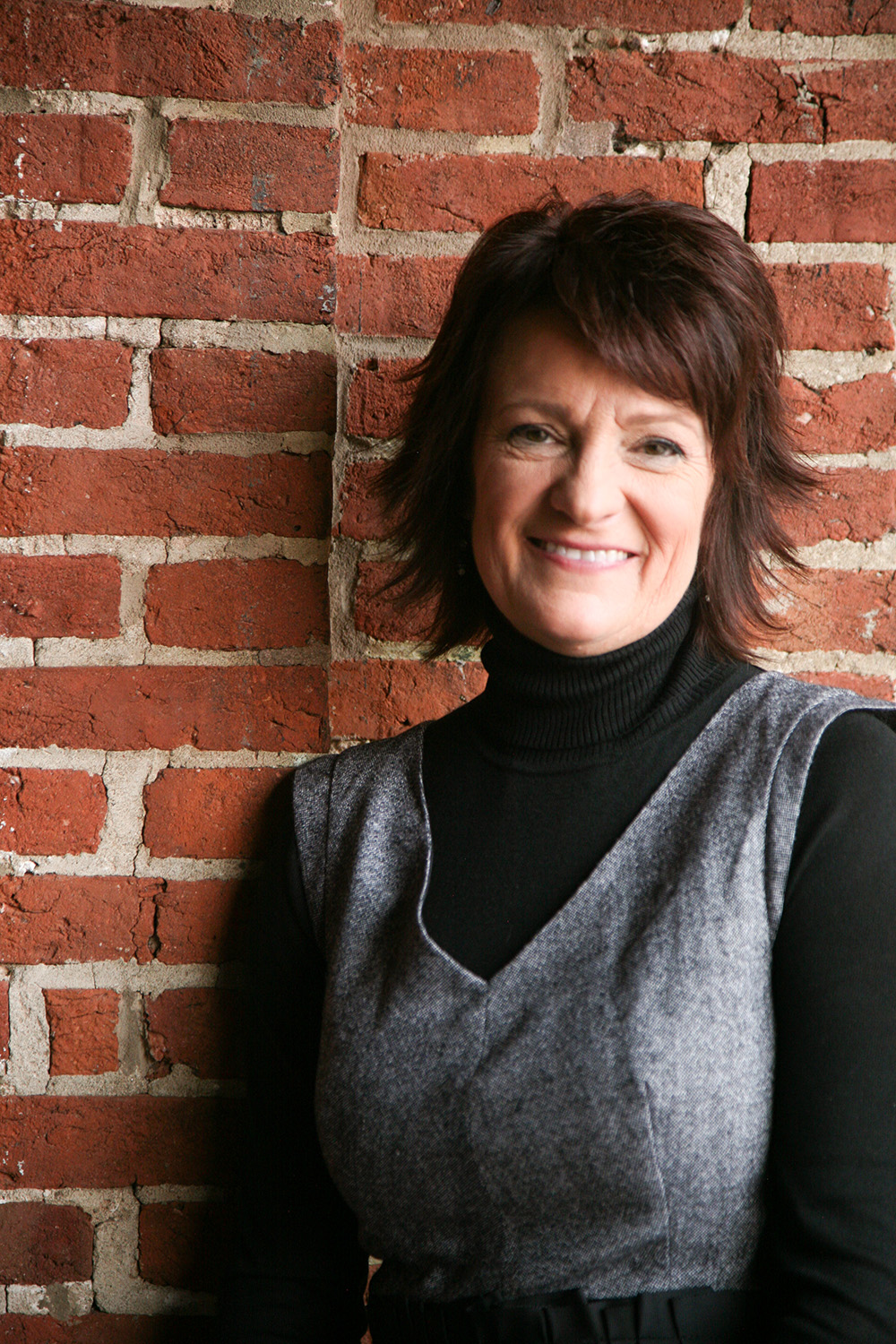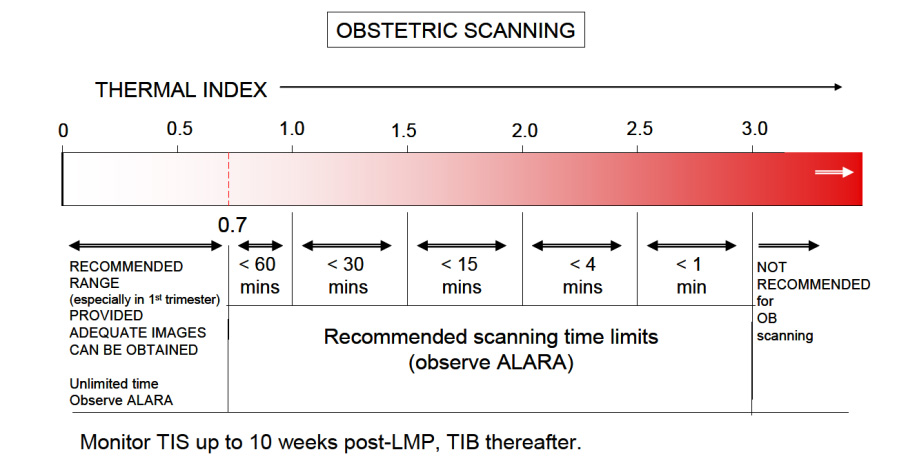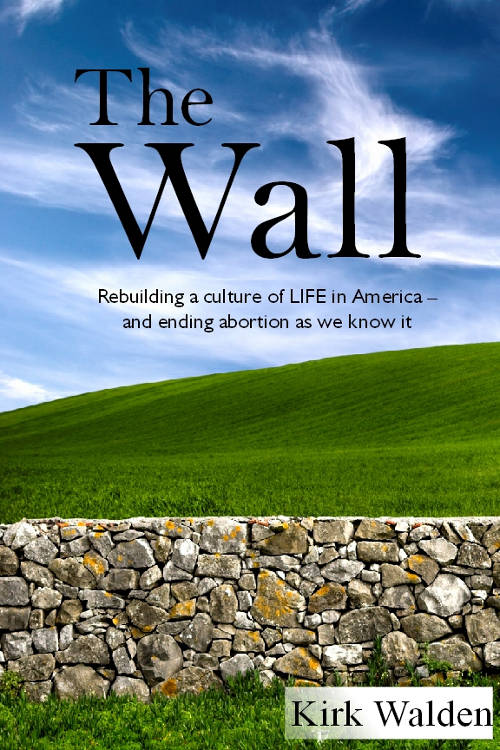Jennifer Wright
Endowments Should Provide Income—Let's Get a Return on Our Investment!
by Kirk Walden, Advancement Specialist
Endowments, even "small" ones, can begin providing regular income for your organization. But with interest rates so low, where do we go to find that income?
This is where a financial advisor comes in. The board can choose a financial advisor by asking interested parties to "interview" for handling the endowment funds on behalf of the ministry, or perhaps there is a trusted advisor who will invest the funds for the board on a pro bono basis.
To fulfill its fiduciary responsibility, the board appoints the advisor to make day-to-day decisions and report back to the board regularly, so the board is aware of the account's status. This way the advisor is not constantly asking the board, "Can I move this portion of the fund into cash? May I invest in this particular mutual fund?"
In this scenario, the board sets parameters with the advisor and gives the advisor its capacity for financial risk. Boards are generally risk averse; a good thing. But, "no risk" can mean "no return." A board that balances its concern over immediate risk with an eye to long-term objectives does well. In the end, a ministry is going to be more conservative in its investment risk than many individuals, but will always have a percentage of its funds in stock funds.
Two quick notes
First, a ministry may want its stock investments to reflect the ministry's views on abortion, not wanting to invest in companies that choose to support the abortion industry. There are mutual funds available with this in mind. Consult with a financial advisor.
Second, a board does not want to weigh itself down with managing individual stocks given by donors. A good policy is to take any individual stock gifts and sell them, turning the stock into cash. From there, the financial advisor (in the case of an endowment) can invest the funds with the overall investment plan in mind.
Click here for more of this month's Advancement Trends in the Life Community.
Thank you letter - February 2015
Each month Advancement Trends in the Life Community brings to you a "thank you letter" that you can send to your donors. February's letter is below:
Dear Joe and Jane,
February means Valentine's Day; a time when many of our young people are desperately "looking for love." Young people want to know they are valued—loved. Yet, we see many who are sold the idea that love somehow must involve intimate physical involvement.
And whether through TV, online, other media or from friends, too often our clients are led to believe that physical involvement is the very definition of love.
When they come in our door however, these valuable young people are offered a life-changing, counter-cultural message they aren't getting on MTV, the most popular web sites or on their IPod.
We want each person who comes our way to know what love truly is, to know that love comes without conditions, and to realize that they can love and be loved, and that waiting for marriage is a concrete, powerful way to show true love.
Your gift makes this possible, and because of your gifts young people are not only hearing this message here, they are responding positively. As we talk with those who come to us, we see more and more that teenagers desperately want to know what the standards should be, and want to believe they can live up to those standards.
Young people want to be loved. But more important, they need to know what love is. Your support is making that happen, and we appreciate you.
Sincerely,
CEO
by Kirk Walden, Advancement Specialist
Click here for more of this month's Advancement Trends in the Life Community.
Click here to download this thank you letter as a word document.
What Happens "Beyond the Budget?"
by Kirk Walden, Advancment Specialist
Boards of Excellence
As board members, a primary responsibility is to monitor the budget and make sure the organization is wisely stewarding the funds entrusted to its care. At the end of the year, a reasonable goal is to finish with more funds in the bank than when we started, right?
Yet if a board isn't looking at what happens "after the budget," it is missing the bigger picture.
Beyond the budget, we must consider the amount of funds we are setting aside for next year, the next and the next. Ultimately, we must lay in place a financial foundation for future boards, staff members and most important, those who come in our doors as clients.
For forward-thinking organizations, an Endowment provides this foundation. Webster defines "endowment" as "a large amount of money that has been given to a school, hospital, etc., and that is used to pay for its creation and continuing support," but we can go further. For our non-profit organizations, an endowment is a fund we can draw upon (whether we use only the interest accrued or choose to withdraw a certain amount each year) to fund different aspects—or a large portion—of our ministries.
Every non-profit organization needs to at least carefully consider an endowment. Used wisely an endowment can be a perfect blend of faith and stewardship, two attributes that should complement each other.
Whether a ministry is launching an endowment or looking for ways to grow this fund, one starting point is the ministry budget. Placing a line item in the budget for the endowment reminds us each month that a portion of today's funds should go toward a better tomorrow.
Whether we start with $50 per month or $5,000, we are on our way to a brighter, more successful future for our ministry.
Click here for more of this month's Advancement Trends in the Life Community.
We are on the move—and those opposed to us are afraid. Very afraid.
by Kirk Walden, Advancement Specialist
The recent news out of Maryland—and the Centro Tepeyac Silver Spring Women's Center—sends us a strong message: Pregnancy Help Organizations are becoming much more effective, and those who wish to protect abortion-on-demand at all costs are getting frantic.
LifeSite News covered the story. In short, NARAL Pro-Choice Maryland worked with the Montgomery County Council to create a 2010 law forcing Centro Tepeyac to post signs declaring when medical personnel were not on site. The law of course, was designed to slow down; even stop, Centro Tepeyac from reaching out to women.
The good news? After four years of fighting, Centro Tepeyac won. Big.
At different stages, three judges struck down the law, with the final ruling coming from a Bill Clinton-appointed judge who fined Montgomery County $375,000 for violating the rights of Centro Tepeyac.
NARAL's president in Maryland didn't give up however, and private emails show both she and the president of the Montgomery County council attempting to collude on other ways to shut down Centro Tepeyac.
What does this tell us? The abortion lobby and its clinics are afraid. They are losing business while pro-life pregnancy centers and medical clinics are gaining ground. (Check out Peggy Hartshorn's argument to that effect here.)
In essence, just like Nehemiah built a wall of hope for the people of Israel in the Old Testament, we are building a pro-life Wall of Hope today, and just like Nehemiah, opposition is everywhere, trying every tactic imaginable.
Our modern day Wall of Hope is composed of thousands of pregnancy help organizations and ministries, places where moms, dads and children can come for safety, away from the deception of the abortion industry.
Tweet this: The Maryland case leaves no doubt – our Wall is rising.
Nehemiah faced incredible opposition, just as we do. Men like Sanballat, Tobiah, and Geshem were constant thorns of criticism, mocking, and scorn. They tried every avenue to shut down the work on a wall that would protect the Jewish people.
Nehemiah would have none of it. At one point Nehemiah was asked to come down off of the wall for a "meeting" with his enemies. Nehemiah knew the meeting was nothing but a plot to kill him, so he gave his detractors a terse response: "I am doing a great work and I cannot come down. Why should the work stop while I leave it and come down to you?" (Neh 6:3)
We—all of us in the pregnancy help community—are involved in a great work. The detractors will continue with their lobbying, their public relations campaigns against us, and their collusion with politicians to enact laws to stop us.
But friends, we are building a Wall of Hope. We will not come down off of our wall until we are finished.
And if the news out of Maryland is any indication, we may be closer to completing our Wall of Hope than we can imagine.
Get Kirk's new book, The Wall at amazon.com today!
At a time when our social and political structure is aligned against the most innocent among us, The Wall brings tremendous hope and vision. Though we’ve experienced a generation of tragedy following the 1973 Roe v. Wade decision, The Wall reminds us that it is often when hope seems lost that God orchestrates extraordinary victory through ordinary people. In addition, The Wall shows that surprisingly, today is the perfect time for creating a new culture of life in America. Get ready to be inspired; and be prepared to take your place building The Wall.
Worrying vs. Seeking God
by Anita Keagy, JoyShop Ministries
"Therefore I tell you, do not worry about your life, what you will eat or drink; or about your body, what you will wear ... but seek first His kingdom and his righteousness, and all these things will be given to you as well." Matthew 6:25 & 33
I will never forget the day when Jesus got my attention as I cried out to Him for abundant life. Up to that point I was living the lifestyle of a hamster running on the ever-spinning wheel! I was tired of worrying about my life, my husband's and children's spiritual lives, as well as keeping up with all the responsibilities that continually filled my day. It was one big burden!
As I looked to the heavens and asked God for the abundant life promised in John 10:10, He immediately brought Matthew 6:33 to my mind. I heard His whisper over my anxious heart, "Anita, you have been living life backwards for many years. Every day you wake up, your day is about you and all you feel you need to get done. You are always trying to squeeze some time with Me and reading my Word into your busy schedule and it's not working. Every day your first priority is to be Me! Time alone with Me and My written Word should be the most important accomplishment for the day. Plan your other activities and many responsibilities around our time together! If you live a lifestyle of seeking Me FIRST, then you can be sure that all the things that you are worried about will be taken care of by Me!"
All of a sudden I saw the truth of how I was living. My daily focus was on all I had to get done that day along with worry and anxieties over the future. But God was asking me to change my focus to seeking intimacy with Him first and then leaving the future to Him.
But what does it really mean to seek first His kingdom? To answer this question I grabbed a dictionary and looked up the key words of this verse.
To "seek" means "to look for, to search intently for, to want to find"! I had to get honest with myself and ask the hard questions: Am I really looking for God? Do I take the time to search for Him? Do I really want to find Him?
Next I looked up the word "first." It is defined as, "Earliest in time or order, foremost in position, rank, or importance." To seek God first means that I will either do it first thing in the morning before I start my day or that I will organize my day around my time with Him! What part of "first" do I not get? First is first!
The word "kingdom" is defined as "a realm where the king's word has full sway." What the king desires is what happens. Every time I open my Bible, I am putting my heart under His sway where my King can get what He desires from my life!
For me, choosing a lifestyle of seeking God FIRST means that every day I am given the gift of waking up, I'm going to begin my day with Him. He is all that matters!
Tweet this! I'm going to begin my day with Him. He is all that matters!
Everything else will fall into place. I want to know Him, find Him and keep seeking intimacy with Him. I have been actively living a lifestyle of seeking God FIRST since that day. This simple discipline has brought the abundant life of Christ and His joy back into my heart! Only one thing is needed: order your day around intimacy with God!

Anita Keagy founded JoyShop Ministries in 2006 with one simple mission: To get people to spend time with God every day through Bible reading and prayer. Since then, she has traveled nationwide and internationally, sharing her message of seeking God first each day as the key to abundant life and joy. Thousands of people have heard and responded to her dynamic message at conferences, retreats, schools and churches.
With a compelling story of how God used a very difficult situation in her life for His glory, Anita shares candidly how she became pregnant as a teenager – all the more “scandalous” because she was a preacher’s daughter – and made the difficult choice to place her daughter for adoption. With tremendous support from family, she heroically bore her child and made an adoption plan. Anita never stopped yearning to know her first-born daughter, even as she married and had four more children. Through a file of letters and the help of her adoption agency, Anita finally met her firstborn 21 years later. God used Anita’s own desire to know her child to impress upon her how much He wants to know His children – us! With that knowledge, a ministry was born that is now thriving and impacting lives every day.
Discover more at www.joyshop.org.
What is it like to be “Poetry in Motion?”
by Kirk Walden, Advancement Specialist
"For we are his workmanship, created in Christ Jesus for good works, which God prepared beforehand so that we would walk in them." Eph. 2:10
As I reflect on Sanctity of Human Life Sunday, I am reminded of this beautiful verse from Ephesians. How wonderful that we are created like poetry – with workmanship.
The words, "Poetry in motion" are generally defined as someone moving gracefully. It's a phrase used to describe anyone from a fabulous dancer to the moves of an elite basketball player.
Most believe that the term began with the 1961 song Poetry in Motion, by Johnny Tillotson. The idea however, may have started much earlier, in the New Testament.
Paul writes in Ephesians that we are God's "workmanship," this particular word coming from the Greek word "Poema." This is the same word of course, from which we glean the idea of a poem. It is not a stretch then, to say that we are in fact, God's poem. We are created to do good works to change our world.
Tweet this! It is not a stretch then, to say that we are in fact, God's poem.
Years ago I heard a children's poet tell a class of elementary students that when writing a poem he often went through more than 100 drafts before finding the words, the rhythm, and the connection his readers needed so that he could say, "Finished."
I doubt God needed 100 "drafts" when creating us. I'm sure He got it right the first time. Yet, we can be assured that just like a poet, God took great care in creating each of us—and Paul tells us He did so for a reason: Good works.
If nowhere else, here we can see the sanctity of our own lives and all human life in God's careful creation!
Serving in a pregnancy help organization truly reflects a desire to do these good works, works God created for us to "walk in them."
Every client, every patient, every resident, every single person we come across is an opportunity to walk in a good work God desires for us to complete.
So take heart. We are God's poems – created in his workmanship – and as we move forward to serve, assist and walk alongside those we see, we are truly "Poetry in Motion."
Resources for Your Medical Director!
Our Medical Directors are a vital part of our Medical Clinics, and provide critical services for us often at their own expense and time. Here are some resources you can pass on to them to let them know how much we all appreciate them and their service to the clinics.
Physicians need 30-50 hours of AMA Category 1 CME to meet the AIUM requirements. Is your Medical Director looking for opportunities to sharpen his/her skills in reading Limited OB Ultrasounds?
American Institute for Ultrasound Medicine: www.aium.org
"Not to be missed is the 38th Annual Advanced Ultrasound Ob/GYN Seminar" http://www.aium.org/soundWaves/article.aspx?aId=865&iId=20150107
Learn From the Experts at the 38th Annual Advanced Ultrasound Seminar: Ob/Gyn
Come to Lake Buena Vista, Florida, this February if you want to expand your obstetric and gynecologic ultrasound knowledge with renowned experts in the field. View the program and register. Join Codirectors Lennard D. Greenbaum, MD, and Frederick W. Kremkau, PhD, along with ultrasound luminaries Alfred Z. Abuhamad, MD, Beryl R. Benacerraf, MD, Joshua A. Copel, MD, Steven R. Goldstein, MD, John C. Hobbins, MD, and Lawrence D. Platt, MD.
This seminar, hosted by the AIUM in collaboration with Orlando Health and the Wake Forest School of Medicine, will be held February 19-21, 2015, at Disney's Yacht and Beach Club Resorts in Lake Buena Vista, Florida. The seminar is filling quickly! Register today and earn up to 13.5 AMA PRA Category 1 Credits.
Do you have a physician who would like to serve your center as a Medical Director but is not trained to read OB scans? Please read through all the options available for them and pass the information along to them.
Below are some great options you can offer to them as resources for both initial training and refresher courses. While Heartbeat does not have any direct knowledge of the courses, these resources were recommended by an RDMS ultrasound trainer who serves in the pregnancy center ministry, and we are passing on the information for the physician to investigate and choose the course best suited for their needs.
Gulfcoast Ultrasound Institute: www.gcus.com
Thomas Jefferson University: http://www.jefferson.edu/university/jmc/departments/radiology/education/cme/ultrasound_courses.html
Wake Forest: http://www.wakeultrasoundeducation.com/courses-and-seminars/obstetrical-ultrasound/
IAME: https://iame.com/conferences/obgyn_ultrasound/
Another Great Resource From the AIUM:
Everything You Want to Know About First-Trimester Obstetric Ultrasound is a great learning tool for which physicians can earn up to 6.0 CME credits.
"After viewing this program, participants should be able to describe the sonographic signs of normal and abnormal gestations and define the role of ultrasound in the early diagnosis of fetal anomalies. The learner attributes are patient care, medical knowledge, and practice-based learning and improvement."
This DVD comes with 5 CME test and evaluation forms that allow you and up to 4 colleagues to earn credits at no extra charge. Need more than 5 tests? Purchase additional sets of 5 tests/evaluations for only $160.00.
New FDA Consumer Update Urges Women to Obtain Medical Sonograms with Trained Operators
By Susan Dammann RN
The FDA has issued a warning. While the FDA's main focus in the warning is to advise pregnant women to avoid commercial sonogram services for nonmedical purposes that could pose a danger to the developing fetus, emphasizing that these are prescription medical devices, are to be used only by trained health care professional and only with a prescription, included within the warning are guidelines/recommendations which we in the pregnancy help medical clinics should be aware of.
Below are three excerpts from the 12/16/14 FDA Consumer Update which may pertain to the use of ultrasound imaging in the PMC, and a question for you to consider.
"Fetal ultrasound imaging provides real-time images of the fetus. Doppler fetal ultrasound heartbeat monitors are hand-held ultrasound devices that let you listen to the heartbeat of the fetus. Both are prescription devices designed to be used by trained health care professionals. They are not intended for over-the-counter (OTC) sale or use, and the FDA strongly discourages their use for creating fetal keepsake images and videos."
Question: Are the sonograms in your center being performed by trained health care professionals?
"The long-term effects of tissue heating and cavitation are not known. Therefore, ultrasound scans should be done only when there is a medical need, based on a prescription, and performed by appropriately-trained operators."
Question: Are the sonograms performed in your center based on a prescription for a medical need?
"Similar concerns surround the OTC sale and use of Doppler ultrasound heartbeat monitors. These devices, which are used for listening to the heartbeat of a fetus, are legally marketed as "prescription devices," and should only be used by, or under the supervision of, a health care professional."
Question: If your center uses Doppler, is it being used under the supervision of a health care professional?
As you consider the above FDA recommendations in relation to the ultrasound services performed in your PMC keep in mind also that one of the points in the Commitment of Care and Competence to which all Heartbeat Affiliates sign in agreement is:
Medical services are provided in accordance with all applicable laws, and in accordance with pertinent medical standards, under the supervision and direction of a licensed physician.
To read the full FDA Consumer Update click here.
IUD Usage in Adolescents
by Marilyn Henderson, RN Freda M. Bush, MD
Medical Institute for Sexual Health
Website: www.medinstitute.org Email: This email address is being protected from spambots. You need JavaScript enabled to view it.
A recently released policy statement by the American Academy of Pediatrics encourages Pediatricians to counsel adolescent patients regarding contraception in order of effectiveness. The most effective contraception is the progestin implant and the second most effective device is the intrauterine device, or IUD. Historically, IUDs were not used in nulliparous women (those who had not previously given birth), nor in women outside of a monogamous relationship. The uterine cavity is usually larger in women who have already carried a pregnancy and it was believed that a smaller uterine cavity would not tolerate a foreign object well, expelling the IUD and increasing the risk of pregnancy. The concern for women who were not monogamous was the increased risk for sexually transmitted infections that could develop into pelvic inflammatory disease.
Additionally, patients who believe that life begins with conception, need to be counseled that although the chemicals included with the IUD (copper or progestin) are designed to inhibit sperm from reaching an egg, IUDs also affect the lining of the uterus, making it undesirable for implantation, if conception does occur.1,2 In addressing the concern of conception occurring with an IUD in place, the Technical Report of the Academy of Pediatrics simply skirts the issue like this:
"The primary mechanism of action of both types of IUD is preventing fertilization by inhibiting sperm motility. The levonorgestrel IUDs also thicken cervical mucus. All mechanisms occur before implantation, when pregnancy begins, and inhibiting implantation is not believed to be a primary mechanism of action for either type of IUD."3
The report does not leave room for personal opinions and beliefs about when pregnancy begins, but simply states that pregnancy begins with implantation. Since the copper IUD, Paragard, is approved for use as an emergency contraception, there is even more concern for those who view the IUD as an abortive method of birth control. Paragard is reported to be 99% effective in preventing pregnancy,4 if inserted up to five days following unprotected intercourse.3 Medical Institute's greatest concern for IUD use in teens is sexually transmitted infections, which can lead to pelvic inflammatory disease and infertility (the inability to achieve pregnancy when desired). This concern is addressed in most of the current literature, but is not seen as a contraindication for IUD use. Interestingly, the CDC's fact sheet on PID6 lists the following risk factors for PID:
- Have an STD and do not get treated;
- Have more than one sex partner;
- Have a sex partner who has sex partners other than you;
- Have had PID before;
- Are sexually active and are age 25 or younger;
- Douche;
- Use an intrauterine device (IUD) for birth control
Just being a sexually active teen is a risk factor for PID. When the IUD is inserted, a second risk factor is added. Another CDC Fact Sheet, "Sexually Transmitted Infections Among Young Americans", points out that "many young people have multiple sex partners", indicating that risk factors numbers 2 and 3 for PID might also be a concern. And finally, the Fact Sheet mentions that many infected teens are often unaware that they have an STI and have not had the proper screening for Chlamydia, indicating risk factor number 1. With five out of seven risk factors for PID specifically being a concern among teens, one must wonder about any recommendation for IUD use in youth.
The American Academy of Pediatrics Technical Report continues the mixed message with statements like this: "...past associations between infertility and IUD use among nulliparous women were attributable to STIs rather than IUDs"3(page e1262) and the CDC Practice Recommendations states, "Although women with STDs at the time of IUD insertion have a higher risk for PID, the overall rate of PID among all IUD users is low."5
The answer to the problem of STIs from both the CDC and the Academy of Pediatrics is condoms. Both organizations recommend that all patients be counseled on the use of condoms, regardless of their choice of contraception to help prevent STIs. However, in 2013, only 8.8% of sexually active high school students reported using condoms along with another method of birth control8, perhaps indicating that with the fear of pregnancy gone, there is little motivation to use condoms.
Fifty percent of all new cases of STIs occur in young Americans from 15–24 years of age. Ignoring the increased risk for PID and resulting infertility for the sake of preventing teen pregnancy is not in the best interest of our youth. Therefore, MI does not agree with the recommendation for IUD placement in adolescent girls.
References:
1). "ParaGard T380A Intrauterine Copper Contraceptive", Rev 6/2013, ParaGard – FDA prescribing information, side effects and uses, Retrieved Oct 2014 from Drugs.com, http://www.drugs.com/pro/paragard.html
2). Skyla (levonorgestrel-releasing intrauterine system, full prescribing information, Retrieved from website Oct. 2014, www.skyla-us.com
3). Ott Mary, et al, Committee on Adolescents, "Contraception for Adolescents: Technical Report," Pediatrics: Official Journal of the American Academy of Pediatrics, 2014;134;el257; originally published online September 29, 2014; DOI: 10.1542/peds.2014-2300. Retrieved Oct. 2014. (quote: p. e1262)
4). Belden P & Harper C, "The Copper IUD for Emergency Contraception, a Neglected Option," (Editorial), Contraception 85(2012) 338-339
5). CDC, "U.S. Selected Practice Recommendations for Contraceptive Use, 2013: Adapted from the World Health Organization Selected Practice Recommendations for Contraceptive Use, 2nd Edition," prepared by: Division of Reproductive Health, National Center for Chronic Disease Prevention and Health Promotion, Morbidity and Mortality Weekly Report, Recommendations and Reports/Vol.62/No.5, June 21, 2013. (quote: p. 10)
6). CDC, "Pelvic Inflammatory Disease (PID) – CDC Fact Sheet", Retrieved Oct 2014 at http://www.cdc.gov/std/pid/stdfact-pid.htm
7). CDC, "Sexually Transmitted Infections Among Young Americans", July 2014. Retrieved Oct 2014 from http://www.cdc.gov/nchhstp/newsroom/2013/SAM-Infographic-2013.html?s_cid=nchhstp-nr-sam-008
8). CDC, "Youth Risk Behavior Surveillance – United States, 2013," Morbidity and Mortality Weekly Report, June 13, 2014, Surveillance Summaries/Vol.63/No.
Reprinted with permission from the Medical Institute for Sexual Health: Marilyn Henderson, RN (1st Author listed) and Freda M. Bush, MD (2nd Author listed).
Ultrasound Safety – Revisited
by Kevin T. Rooker, RT(R), RDMS, RVT, Sonography Consultants
Is ultrasound safe? Will it hurt my baby? These are questions we sometimes hear from our clients. We need to be able to answer those questions with confidence for several reasons. First, because our patients deserve an honest answer, and second because we never know who is listening. We know that there are some that think you should not be performing limited OB ultrasound and will always be looking for reasons to justify their position. Let's not give them that opportunity on the issue of ultrasound safety. Unfortunately, we, the medical community, have not done as well as we can at educating ourselves on the safety of ultrasound1.
Ultrasound is a wave of mechanical energy that penetrates human tissue as an oscillating (alternating) wave of high and low pressure. As it does so, there are two potential types of biological effects; Mechanical and Thermal. In 1993, the FDA allowed ultrasound manufacturers to significantly increase the amount of ultrasound energy created in diagnostic ultrasound systems, as long as they displayed the MI (Mechanical Index) and TI (Thermal Index) on the screen for the operator (and our clients) to see. The premise being that if we know what the MI and TI are, what their limits are, and most importantly how to lower them, then we are being as safe as we possibly can.
The Mechanical Index is a safety metric which lets the operator know how much energy is being transmitted into the patient during a sonography examination. Remember that sound is created by pressure waves, so mechanical energy is transmitted into any object which receives sound. Sound waves can be quite powerful. For example, think of the thump on your chest when sitting next to a teenager's car with the high dollar stereo system. It is defined as the peak negative pressure (PNP) of the ultrasound wave (point of maximal rarefaction). In easier terms; think pressure change divided by time. Lots of pressure change over short periods of time can be damaging. The FDA has established a maximum MI of 1.9 for diagnostic imaging. Any machine capable of generating MI greater than 1.0 must display the MI onscreen. The FDA MI limit for obstetric sonography is 1.0.
The Thermal Index is another safety metric which lets the operator know the potential of creating heat (hyperthermia) with the ultrasound beam. Many assumptions are made in this calculation, and it is often thought that the heating potential is underestimated. So keep in mind that the TI formulation was not intended to, and cannot provide an accurate measure of temperature rise within a specific patient. Instead it was designed to provide the operator with a relative measure of risk for a particular imaging mode. A Thermal Index of one (TI 1) indicates conditions under which the rise in temperature would be likely to be 1°C. The thermal index is different for different types of tissue, and can be displayed on your system accordingly: soft tissue (TIs), bone (TIb) and cranium (TIc). In the first trimester, when using Doppler to hear and demonstrate the fetal heart, the TIs setting us used. The limit for TI varies with time, please reference the chart below from the British Medical Ultrasound Society, the entire document may be found here.

Enough about what the MI and TI are, how do we as operators keep them at safe levels? There are two basic concerns to remember.
First is the AIUM ALARA policy2; which is an acronym for As Low As Reasonably Achievable. Simply translated, it means to keep the output power settings as low as possible, that still allows for adequate images. Most ultrasound systems can operate with output power settings at about 50% and still produce quite satisfactory OB images. Have your system presets adjusted so that when you are performing OB sonography both (abdominally and transvaginally), the output power settings are set low. You can always increase them if clinically necessary. And keep in mind that you can increase the gain to make your image brighter, as gain is just how well the system is "listening", it has no effect on the TI.
The second concern is time. Keep the overall examination as short as is reasonable. If using Doppler to allow Mom to hear her baby's heartbeat, depending upon your ceter's policy, keep the Doppler exposure to about 5-10 seconds. Know where to find the MI and TI displays on your system. If you don't know, consult your operator's manual or contact the manufacturer of your ultrasound system for more information.
Diagnostic ultrasound in obstetrics has been around for the better part of 40 years. To date, no one has been able to prove (and many have tried) that diagnostic ultrasound, when used prudently (MI,<1.0 and TI<0.7), has had any adverse effects developing fetuses; and this includes the limited use of Doppler in the first trimester "Thus far, there have been no significant thermal effects documented in humans and at this time the possibility of having all the factors present to is highly unlikely 3." However, it has been shown that aborting a living fetus is fatal, every time.
References
1. Ultrasound Is Safe . . . Right? Resident and Maternal-Fetal Medicine Fellow Knowledge
Regarding Obstetric Ultrasound Safety. J Ultrasound Med 2011; 30:21–27
Sheiner E, Abramowicz JS. Clinical end users worldwide show poor knowledge regarding safety issues of ultrasound during pregnancy. J Ultrasound Med. 2008;27(4):499-501
2. As Low As Reasonably Achievable (ALARA) Principle Approved 4/2/2014 aium.org/officialStatements/39
3. FDA Recommendations for the Safe Use of Ultrasound in Obstetrics CNE article authored by Sherri A. Longo, M.D. Assistant Professor in the Department of Obstetrics and Gynecology, Division of Maternal-Fetal Medicine, Tulane University School of Medicine in New Orleans, Louisiana; e-edcredits.com/nursingcredits/article.asp?testID=29


